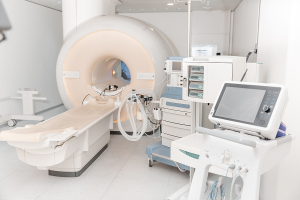by
John R. Fischer, Senior Reporter | November 17, 2022

Medical imaging rose 5.3% among Medicare beneficiaries seen by non-physician practitioners, instead of only doctors.
U.S. emergency departments saw imaging rates rise when patients were treated by nonphysician practitioners, rather than only doctors.
From 2005 to 2020, 5.3% more imaging studies were performed on Medicare fee-for-service beneficiaries who together had 16,922,274 ED visits, as recorded in a new Harvey L. Neiman Health Policy Institute study.
Author Eric Christensen, director of economic and health services research at the Neiman Institute, says this equates to more than one million imaging studies annually when applied to the roughly 20 million ED visits that occur each year among this patient population.



Ad Statistics
Times Displayed: 54019
Times Visited: 5239 MIT labs, experts in Multi-Vendor component level repair of: MRI Coils, RF amplifiers, Gradient Amplifiers Contrast Media Injectors. System repairs, sub-assembly repairs, component level repairs, refurbish/calibrate. info@mitlabsusa.com/+1 (305) 470-8013
“Although we focused on Medicare, there are approximately 130 million annual ED visits in the United States, so this figure could be substantially higher,” he said in a statement.
The increase with nonphysician practitioners was attributed to a 3.4% increase in the likelihood of an ED visit including imaging.
The presence of nonphysician practitioners in the ED correlated with a 3.2% rise in radiography; a 7.3% increase in CT; and 14.2% with MR, ultrasound and other imaging modalities. All these forms of imaging have increased rapidly within the ED, say the authors.
Management of these visits by nonphysician practitioners has steadily increased, according to the study, going from 6.1% in 2005 to 16.6% in 2020. This could in part be due to the fact that nonphysician practitioner care has the potential to lower healthcare costs, as the Medicare Physician Fee Schedule pays them 85% of what it pays physicians for services.
The authors note, however, that increases in imaging and other associated costs with these professionals would offset any lower reimbursements. “We did not address this cost question, but future research should explore the total cost impact of nonphysician practitioners in the ED, considering both reimbursement and imaging orders,” said Dr. Timothy Swan, diagnostic and interventional radiologist at Marshfield Clinic Health System, in Wisconsin.
Christensen also says that the study should not be seen as a “judgment” about whether or not increases in imaging are effective. “The variation we found in practice patterns between physicians and nonphysician practitioners highlights an opportunity to ensure the judicious use of imaging. These efforts need to address both when and what imaging is appropriate.”
The findings were published in
JAMA Network Open.

